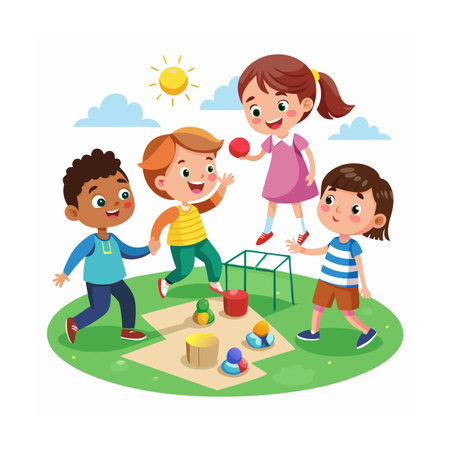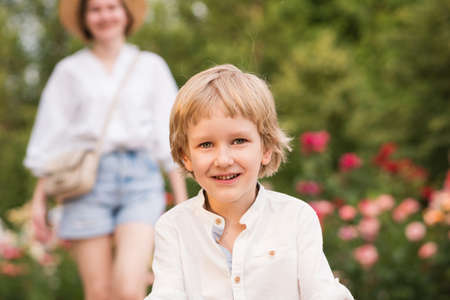Introduction to Wildlife-friendly Gardening
Gardening with children offers a unique opportunity to foster a love of nature and an understanding of the vital role insects and butterflies play in UK gardens. In recent years, awareness has grown about the importance of supporting local wildlife, particularly pollinators such as bees, ladybirds, and native butterfly species like the Small Tortoiseshell and Peacock. These creatures are not only essential for maintaining healthy ecosystems by pollinating flowers and controlling pests, but they also offer valuable learning experiences for young gardeners. Engaging children in wildlife-friendly gardening encourages curiosity, observation skills, and a sense of responsibility towards the environment. By creating habitats and providing food sources for insects and butterflies, families can contribute to biodiversity right at home while making gardening an interactive, educational adventure.
2. Planning a Child-friendly Wildlife Garden
Creating a wildlife garden with children in the UK is an exciting opportunity to nurture both young minds and local biodiversity. A thoughtful approach ensures the space is safe, engaging, and truly beneficial for native insects and butterflies.
Guidelines for Selecting UK-Appropriate Plants
Choose plants that are not only attractive to pollinators but also suitable for British climates and easy for children to help care for. Native species offer the best support for local insects and are generally hardier in unpredictable weather.
| Plant Type | Examples (UK Natives) | Pollinator Benefits | Child-Friendly Features |
|---|---|---|---|
| Wildflowers | Cornflower, Oxeye Daisy, Red Campion | Nectar-rich, supports bees & butterflies | Easy to sow, colourful displays |
| Herbs | Lavender, Chives, Mint | Fragrant blooms attract bees | Safe to touch, sensory experience |
| Shrubs | Buddleja (Butterfly Bush), Hawthorn | Provides shelter & food for insects | Tough, low-maintenance options |
| Grasses & Sedges | Crested Dog’s-tail, Red Fescue | Caterpillar food sources | Soft textures for play areas |
Safe Garden Layouts for Children
Safety is paramount when designing any outdoor learning environment. Paths should be wide enough for little feet and prams, with non-slip surfaces such as bark chippings or compacted gravel. Avoid water features deeper than 10cm unless supervised at all times, and position any prickly or toxic plants well away from play zones.
Key Safety Tips:
- Clear boundaries: Use low fencing or hedging to mark out the wildlife area and prevent accidental trampling of habitats.
- Avoid chemical use: Opt for organic gardening methods; pesticides can harm both children and beneficial insects.
- Tidy tool storage: Always store tools securely after use to prevent accidents.
- Supervised exploration: Encourage hands-on discovery but keep an eye on younger children around dense planting or log piles.
Creating Welcoming Habitats for Pollinators
Diverse habitats support a wider range of insects and butterflies. Incorporate features that provide food, shelter, and breeding sites throughout the year.
| Habitat Feature | Description/Benefit | How Children Can Help |
|---|---|---|
| Pond or Mini Wet Area | Mud-loving insects; drinking spot for butterflies (ensure shallow edges) | Create pebble beaches; add water plants together |
| Log Piles & Bug Hotels | Nesting places for beetles, solitary bees, and other pollinators | Stack logs; fill bug hotels with bamboo tubes as a group activity |
| Wildflower Meadow Patch | Nectar source spring through autumn; caterpillar habitat | Sow seeds and watch them grow over seasons; record visiting insects in a notebook |
| Sheltered Corners & Hedges | Protection from wind and predators; hibernation spots for butterflies like the Peacock or Small Tortoiseshells | Create mini dens using sticks and leaves; observe changes through the year |
Final Thoughts on Inclusive Design
The ideal child-friendly wildlife garden balances structured paths with wilder pockets of nature. By carefully selecting UK-appropriate plants, prioritising safety, and introducing diverse microhabitats, you create a living classroom where children can safely explore—and where pollinators will thrive alongside them.

3. Hands-on Planting Activities
Getting children involved in hands-on gardening projects is one of the most effective ways to nurture a love for nature and support local insect and butterfly populations. Engaging youngsters in practical activities not only sparks their curiosity but also fosters responsibility and teamwork. Below are a few tried-and-tested ideas specifically tailored for UK gardens.
Sowing Wildflower Seeds
Wildflowers provide essential nectar and pollen for bees, butterflies, and other pollinators. Encourage children to scatter native wildflower seeds in a sunny patch of the garden or even in pots. Choose British species such as cornflowers, poppies, and oxeye daisies to ensure they thrive in local conditions. Show children how to gently rake the soil before sowing, press the seeds down lightly, and keep them watered during dry spells. Watching the flowers grow week by week offers an excellent opportunity for observation and discussion about the different insects attracted to each plant.
Building Bug Hotels
Bug hotels are simple yet fascinating constructions that offer shelter for beneficial insects like ladybirds, solitary bees, and lacewings. Gather natural materials such as bamboo canes, pine cones, hollow stems, and pieces of bark—many of which can be found on woodland walks or in local parks. Help children stack these materials in an old wooden box or pile them up between bricks to create nooks and crannies. Position the bug hotel in a quiet, sheltered corner of the garden and encourage regular inspections to see which minibeasts have moved in over time.
Creating Butterfly Puddling Stations
Butterflies need more than just nectar; they also seek out moist spots where they can drink water and absorb vital minerals. Making a butterfly puddling station is both easy and rewarding for young gardeners. Fill a shallow dish with sand or gravel and add enough water to keep it damp but not flooded. Place it near flowering plants and show children how butterflies gather around to feed. This simple activity helps children observe butterfly behaviour up close while supporting their nutritional needs.
Encouraging Curiosity Through Exploration
By involving children directly in these hands-on activities, you create countless opportunities for learning through play and discovery. Encourage youngsters to keep notes or sketches of what they see—perhaps even starting a simple nature diary. Not only does this reinforce scientific skills, but it also deepens their connection with the environment right outside their door.
4. Observing and Recording Garden Wildlife
Encouraging children to observe and record the wildlife in their garden is a fantastic introduction to citizen science. This activity not only nurtures curiosity but also helps young people develop skills in observation, identification, and documentation. In the UK, we are fortunate to have a wealth of resources tailored for spotting and recording local butterflies and insects.
Getting Started with Wildlife Observation
Begin by equipping children with simple tools: a notebook, pencil, magnifying glass, and perhaps a printed British insect chart. Head outdoors at different times of the day to see how wildlife changes. Remind children to move slowly and quietly to avoid disturbing any creatures.
Easy Identification Tips
Children can learn to identify common butterflies and insects using guides from organisations such as the Royal Entomological Society or Butterfly Conservation. Many of these guides feature colourful images and easy-to-read descriptions, perfect for young naturalists.
| Name | Key Features | Where to Spot |
|---|---|---|
| Small Tortoiseshell Butterfly | Orange and black wings with blue spots along edges | Lawn flowers, buddleia bushes |
| Bumblebee | Fuzzy body, black and yellow stripes | Clover patches, lavender, foxgloves |
| Ladybird (Seven-spot) | Red shell with seven black spots | On leaves, stems of nettles and roses |
| Peacock Butterfly | Red wings with eye spots | Nettles, open sunny spots |
Recording Your Findings: Child-Friendly Methods
Create a simple wildlife logbook or use free apps such as iRecord Butterflies (endorsed by UK conservation groups). Encourage children to note:
- Date and time of observation
- Name (or description) of the insect or butterfly spotted
- Where it was found in the garden (e.g., near pond, on sunflower)
- Weather conditions (sunny, cloudy, rainy)
- A quick sketch or colour-in drawing
Tapping into Local Resources
The UK boasts excellent resources for budding citizen scientists. Organisations like The Wildlife Trusts offer downloadable spotter sheets, while annual events such as the Big Butterfly Count invite families to submit their sightings online—helping to build a national picture of garden biodiversity.
5. Storytelling and Creative Learning
Bringing stories and creativity into the garden is a powerful way to help children connect with the world of insects and butterflies. By weaving narrative and hands-on projects into gardening activities, young learners can develop a lasting curiosity and appreciation for local wildlife.
Using Stories to Spark Curiosity
Start by sharing classic British tales or folk stories that feature insects and butterflies as characters. Books such as “The Very Hungry Caterpillar” or local legends about bees and butterflies can be read outdoors to set the scene. Encourage children to imagine their own insect adventures, perhaps inventing stories about the journey of a ladybird across your flower beds or the transformation of a caterpillar in your allotment.
Journaling Nature Observations
Provide each child with a simple notebook to serve as their garden journal. Encourage them to record daily sightings, sketch different insects they find, or write short diary entries about their favourite garden moments. Over time, these journals become personal nature records and encourage careful observation—a key scientific skill.
Craft Projects Inspired by Local Insects
Get creative with craft sessions inspired by what children see in the garden. Make butterfly feeders from recycled materials, paint pebbles as colourful beetles, or create bee hotels using bamboo canes. These hands-on activities not only reinforce learning but also give children a sense of ownership over their insect-friendly space.
Linking Creativity to Conservation
Use these creative activities to open discussions about why insects are important for gardens in the UK—such as pollination and pest control. By telling stories, keeping journals, and making crafts together, you’ll help children build empathy for insects while developing practical skills and environmental awareness.
6. Seasonal Gardening Tasks with Children
Getting children involved in gardening throughout the year is a brilliant way to nurture their connection with nature while supporting local insect and butterfly populations. Each season brings its own set of garden jobs that are both educational and fun, making it easy for young gardeners in the UK to get stuck in and make a real difference.
Spring: Awakening the Garden
Spring is an exciting time as gardens wake up from winter. Children can help by sowing wildflower seeds—perfect for attracting early pollinators like bees and brimstone butterflies. Encourage them to plant native species such as primroses, bluebells, and foxgloves. Setting up bug hotels or simply leaving small piles of twigs provides shelter for emerging insects. Checking for overwintering caterpillars under leaves or logs also teaches respect for hidden wildlife.
Summer: Caring and Observing
During summer, gardens burst into colour and life. Kids can water plants, deadhead flowers, and monitor which blooms attract butterflies like the peacock or small tortoiseshell. Creating shallow water dishes with stones gives insects a safe place to drink. This is also an ideal time for children to keep nature journals—recording the different butterflies and bugs they spot encourages observation skills and awareness of biodiversity.
Autumn: Preparing for Rest
Autumn offers valuable lessons about the life cycle of both plants and insects. Let children collect seeds from finished flowers to sow next year, explaining how this helps sustain food sources for future generations of pollinators. They can also leave some plant stems uncut, providing overwintering sites for ladybirds and other beneficial insects. Raking leaves into a quiet corner creates habitat for hibernating butterflies like the comma or small tortoiseshell.
Winter: Supporting Wildlife Through the Cold
Although growth slows down in winter, there are still important tasks children can do. Making fat ball feeders from lard and seeds supports birds—and indirectly helps insects by keeping bird populations healthy. Checking bug hotels or log piles ensures they’re undisturbed for hibernating creatures. Winter walks around the garden are perfect opportunities to discuss how insects survive cold months, fostering empathy for even the smallest residents.
Year-Round Responsibility
By engaging children in seasonal gardening tasks, you give them practical ways to care for their environment all year round. These activities not only boost their knowledge but also empower them to become stewards of wildlife—one bug-friendly job at a time.
7. Encouraging Ongoing Curiosity and Care
Fostering a long-term interest in gardening and wildlife with children is about creating regular opportunities for engagement and learning. To keep curiosity alive, it’s helpful to establish simple routines—such as weekly bug hunts, butterfly counts, or watering duties—that empower children to take ownership of their patch of garden. Setting up a wildlife diary, where children can record the insects and butterflies they spot throughout the seasons, turns observation into an ongoing project and helps them recognise patterns in nature.
Integrating Gardening into Daily Life
Children thrive on consistency and responsibility. Assigning small, age-appropriate tasks—like refilling bird baths, checking bug hotels, or planting nectar-rich flowers—encourages stewardship. Involving children in planning what to grow next season or designing new insect habitats gives them a say in the garden’s evolution and keeps their enthusiasm high.
School and Community Projects
Many UK schools have adopted “Forest School” principles or set up dedicated wildlife gardens. Parents and carers can support by volunteering or suggesting collaborative projects such as building pollinator pathways or hosting a “Butterfly Day”. Community gardens often welcome young helpers; these spaces are excellent for meeting likeminded families and learning from experienced gardeners.
Further Learning with UK Organisations
If you’re looking for inspiration or educational resources, several UK organisations offer brilliant support: The Royal Horticultural Society (RHS) runs campaigns like “RHS Campaign for School Gardening”, providing guides and lesson plans. Butterfly Conservation has child-friendly identification sheets and runs the annual Big Butterfly Count. The Wildlife Trusts organise family events across the country, from pond dipping to meadow making. Exploring these resources together can spark new questions and ideas—fuel for a lifelong journey of discovery in the garden.


